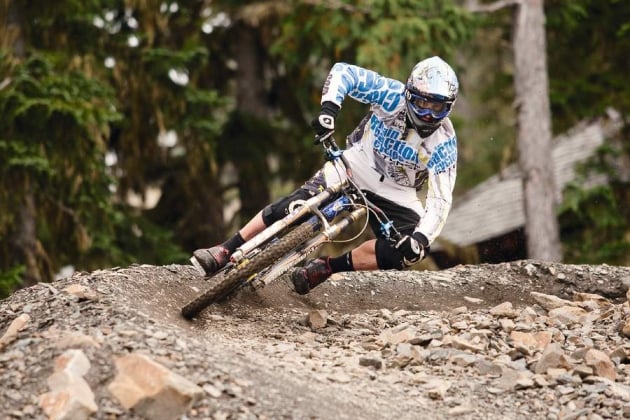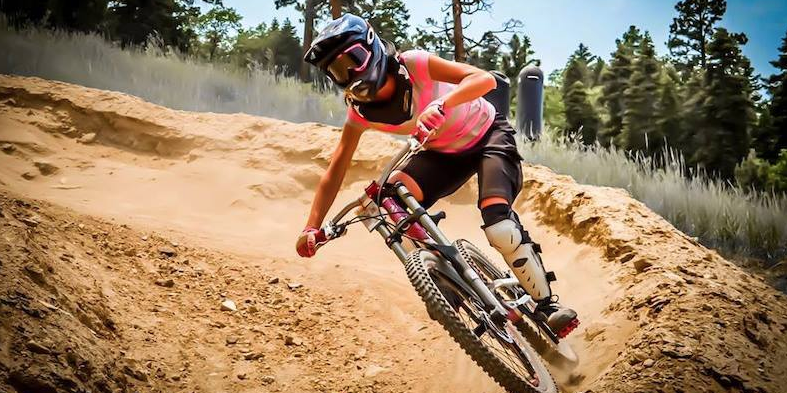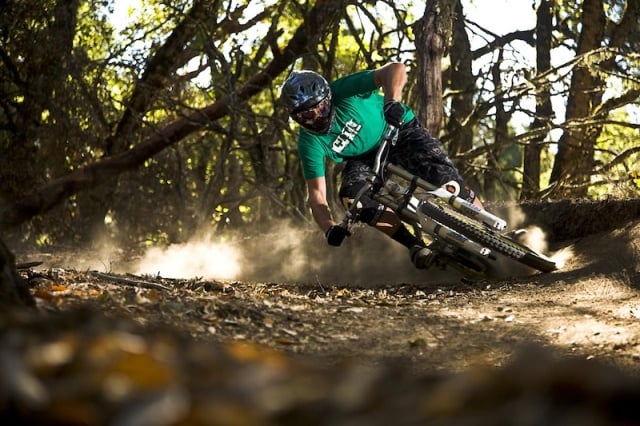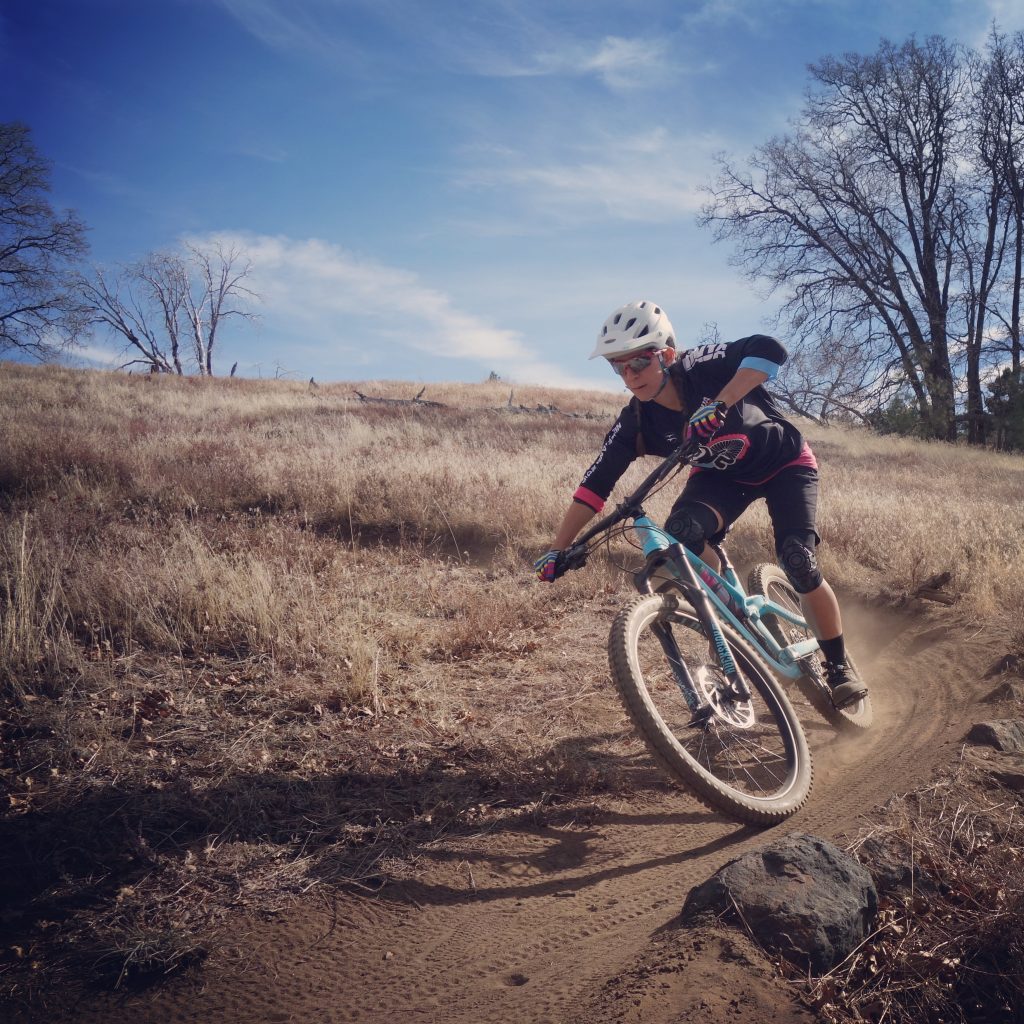How to Corner Like a Pro, 7 Steps
Learning how to corner correctly will make riding a heck of a lot more fun while doing wonders to increase your speed and efficiency. To help you get started with stepping up your cornering game, we’ve broken the skill broken down into 7 steps:
1. Set Your Speed
Slow down to a speed at which you can safely and smoothly negotiate the corner. If you overestimate, use your rear brake only to check speed. Never use your front brake in a corner; your front wheel could easily wash out. When you’re first learning, we recommend slowing down slower than you think you need to. It’s be better to flow through the corner at a slow speed with good technique rather than ‘fast’, dragging your brake all the way through the corner.

2. Get Ready
Get in the Ready Position. Push your handlebars down towards the inside of the corner while your outside arm pulls up. Do not pull either side of the handlebars towards you, or you’ll turn the front wheel, we want to lean the bike. Note that while you are technically pushing / pulling the handlebars, this is not a maneuver that requires force. Essentially, you’re just putting the bars when you need them. Keep your weight in your feet, not your arms.
3. Choose Wisely
If it’s a flat or off-camber corner, enter on the outside of the corner. That means, if it’s a left-hand corner, enter on the right side of the entrance and lean the bike into the apex of the corner. Once you’ve passed the apex of the corner you can start to bring the bike back upright for the exit.
On bermed corners, the faster line (which will usually produce an acceleration) is to enter high, and push low through the apex to exit low on the berm. This is terrain permitting. If the high part of the berm is rutted or rocky (or otherwise technical), choose a slightly lower line to avoid that rough part. Keep your corner smooth.
4. Separation Anxiety
Separate yourself from the bike by swinging your hips to the outside of the corner, so your butt is next to your saddle. If you have a dropper seat post, drop it to allow your leg to easily move over the saddle. If you have a fixed seat post, bring your butt forward and around the saddle to get your weight to the outside of the corner.
The flatter (or more off-camber) the corner, the more separation you’ll need. This separation naturally allows your outside foot to come to the down position. The more weight you put on your outside foot, the more your tire side-nobs drive into the corner (more traction).
Keep your knees out to allow the bike to lean beneath you. Your weight needs to be to the outside counter-balancing the bike as you flow through the corner.
As you progress with your cornering, you’ll learn that the more precise you are with your footwork, the more you can effect your traction and acceleration out of the corner. For example, a quick application of pressure to your outside foot right at the apex of an early apex corner (or other tight apex corner), results in the bike compressing and then ‘snapping’ out of the corner. This application of pressure is called pressure control and it’s the key to getting really smooth, and subsequently really fast on corners.
5. Look at the Camera!
Ever wonder why in every photo you’ve ever seen of someone ripping around a corner, the rider is looking right at the camera? It’s because the photographer knows that’s where the ride should be looking! Look through the corner. As you enter keep your head up and look at the exit. As you finish your corner, look down the trail to whatever happens to be coming up next. Head up, head up, head up.
6. It’s all in the Hips
Twist your hips in the direction you want to corner. Imagine you have lasers attached to to your hips and you want to point them through the corner towards the exit. Initiate your lean as your enter the corner, well before your reach the apex, but not before you actually get into the corner. Separating and/or dropping your outside foot before the corner will result in the bike wanting to stand up and will make leaning the bike more difficult. Note: separation requires leaning the bike, not you.
7. Be Smooth
Smooth is fast. When you’re first learning this skill, slow down. Focus on riding smooth, not fast. Speed will come with time (a.k.a. lots of practice). We recommend practicing this skill on a grassy area around a tree or some cones. Setting up a 180-degree flat corner about 12 feet wide is a great way to get your cornering on track. As you improve, reduce the size of the corner, add speed and start experimenting with precise foot-work and pressure control.











aprender a dominar a su bici y podrqan hacer muchos trucos en cada salida
Step 8, rail your corners whenever possible. Riding across the carpark while your buddy fidgets with her bike, straight shots back from the trail and going around corners in the neighborhood all offer opportunity to practice.
Avoid skidding. It is the least efficient way to slow down and tears up the trails.
++ thank you, Chris Craig!
It seems like somewhere along the line trail etiquette has been lost and people want to drag their rear tire around every corner. Please don’t!